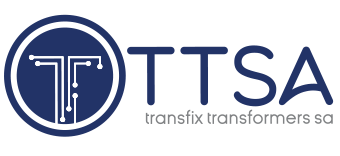A plan by South Africa’s state power utility to circumvent pollution controls at one of its two biggest coal-fired plants to enable it to bolster its generation capacity may lead to hundreds of deaths, according to the Centre for Research on Energy and Clean Air (CREA). Eskom Holdings’ application to partially bypass its flue-gas desulfurization unit at the Kusile station for just over a year could see it emit 280,000 extra tons of sulfur dioxide, while mercury emissions would jump 40%, the Helsinki-based pollution research nonprofit said in a report sent to Bloomberg News. It estimates that about 680 people could die as a result.
Posts
President Cyril Ramaphosa will chair a special Cabinet meeting on Wednesday to examine a plan by electricity minister Kgosientsho Ramokgopa to slow the decommissioning of old coal power stations as the country battles with energy supply. News24 understands that the special Cabinet meeting was called after the African National Congress’ (ANC’s) national working committee (NWC) on Monday approved a plan that would slow down the retirement of old coal power stations.
The South African Local Government Association (Salga) has acknowledged with concern the debt spiral that both State-owned utility Eskom and municipalities currently face. Municipalities were owed R306-billion as at December 31, 2022, while municipalities, in turn, owe Eskom R56.3-billion.
Climate technology company Plentify and independent dealer Cellucity have announced a partnership to bring Plentify’s flagship energy-saving HotBot product to select Cellucity stores nationwide, as well as its online ecommerce website. HotBot is a smart energy device that uses machine learning and the Internet of Things technology to control electric geysers, intelligently turning them on and off, reducing energy use by about 30% while still providing hot water when needed.
The City of Cape Town’s ‘Building Hope’ budget for 2023/24 proposes continued investment in its Steenbras hydroelectric pumped storage scheme, laying the foundation for a potential estimated investment of about R1.2-billion over the next nine years on the maintenance and expansion of the plant.
City of Cape Town energy mayoral committee member councillor Beverley van Reenen says about R1-billion has been set aside for the refurbishment and extension of the 160 MW Steenbras scheme and about R200-million is earmarked for the maintenance of Steenbras.
The National Energy Regulator of South Africa (Nersa) will host virtual hearings on May 19 ahead of it providing concurrence with determinations opening the way for the procurement of 3 800 MW of emergency and cross-border electricity capacity. In February, Mineral Resources and Energy Minister Gwede Mantashe granted Eskom an exemption from the Electricity Regulations on New Generation Capacity to proceed with three procurement programmes, including:
Government and the steel industry are considering the potential of positioning South Africa as a global exporter of green hydrogen direct reduced iron (GHDRI) as part of a broader discussion to develop a roadmap for the decarbonisation of the iron and steel value chain. Department of Trade, Industry and Competition primary minerals beneficiation and construction director Mahendra Shunmoogam told stakeholders during a meeting in Sandton that green processing and production are likely to become a significant competitive advantage, especially in the export market.
The five nuclear energy-using member countries of the Group of Seven major democratic economies (G7) on Sunday issued a joint statement announcing their intent to create a global commercial nuclear fuel market. The countries are Canada, France, Japan, the UK and the US. (The other two G7 countries are Germany, which has just closed its last nuclear power plants, and Italy, which closed its last nuclear power plants in 1990.) “Collaborating on strategic opportunities in uranium extraction, conversion, enrichment, and fabrication supports our collective climate, energy security and economic resilience objectives,” affirmed the five countries in their joint statement. “This multilateral cooperation would enable us to strengthen our domestic sectors and establish a level playing field to compete more effectively against predatory suppliers.”
Organisation 350Africa.org has welcomed the Presidential Climate Commission’s (PCC’s) recommendations on South Africa’s long-term electricity planning and the Just Energy Transition Investment Plan (JET-IP), during a National Colloquium attended by government, labour and civil society stakeholders, including representatives from 350Africa.org, on April 14. “We welcome the PCC’s recommendation to support green industrial development, economic diversification, and localisation of crucial transition value chains.
The inability of South Africa’s main power producer Eskom Holdings to meet demand is not only hurting the continent’s most-industrialised economy but affecting manufacturers on an island more than 2 000 miles away. Chronic power shortages have reduced demand for Mauritian manufactured goods by South African retailers, the main buyer of products from Mauritius, Arif Currimjee, the outgoing chairperson of the Mauritius Export Association, said in an emailed response to questions. The outages pose a “downside risk” to growth in the industry after two straight years of recovery, he said.
INDUSTRY NEWS
- NERSA appoints Electricity Market Advisory Forum to guide power-market reformDecember 19, 2025 - 2:04 pm
- Eskom offers more details on envisaged roles of the NTCSA and the TSODecember 18, 2025 - 11:04 am
- NTCSA says any electricity deal to salvage Mozal must ensure its financial sustainabilityDecember 17, 2025 - 3:01 pm
WHERE TO FIND US
Address
9 Yellow Street
Botshabelo Industrial Area
Botshabelo, Free State
Call / Email Us
Tel: +27 (0) 61 956 6772
Email: info@transfix.co.za
